Poetry Walk
The African American Garden’s poetry walk was curated by Dante Micheaux, poet and program director of Cave Canem, an arts organization created to cultivate the artistic and professional growth of African American poets.

Open All Day for Exploration | At the Edible Academy
Take some time to stop here and wander for a spell. Here in these eight beds you will find stories of resilience and resistance, modification and migration, remembrance, reverence, and hemispheric-wide connection told through the plants of our world.
The phrase “Same Boat Different Stops” speaks to the links shared by all people of African descent in the American hemisphere. Over our more than 500 years as inhabitants of this hemisphere, we have, with our cultures, labor, and agricultural know- how, transformed it. This garden acknowledges our presence here, in all of its forms.
Stop for a sip of something at the red drink stand. Muse on our connection to the landscape in the poetry walk’s lyrical language. As you stroll here, you will enter our plant world, past and present. Celebrate our wondrous connection to this hemisphere and learn a bit about our history. We hope that you will leave informed, inspired, and amazed.
—Jessica B. Harris, Ph.D.
Explore the African American Garden | Diaspora: Same Boat Different Stops and the species planted here with this interactive map.
For many in this hemisphere, it was all about sugarcane. Cane is relentless and requires long hours in the sun during planting and growing seasons. Then, it demands dangerous round the clock labor to bring in and process the crop. Step into our cane field to understand cane as the most brutal of the colonial cash crops. The field is here to acknowledge all of the agricultural work that was done by African hands in the hemisphere.
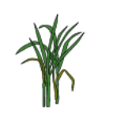 Sugarcane (Saccharum officinarum ‘Jamaican stripe’)
Sugarcane (Saccharum officinarum ‘Jamaican stripe’)
 Sugarcane (Saccharum officinarum ‘Homeowners green’)
Sugarcane (Saccharum officinarum ‘Homeowners green’)
 Sugarcane (Saccharum officinarum ‘Purple Ribbon’)
Sugarcane (Saccharum officinarum ‘Purple Ribbon’)
 Sugarcane (Saccharum officinarum ‘Bourboriat Suriname’)
Sugarcane (Saccharum officinarum ‘Bourboriat Suriname’)
 Sugarcane (Saccharum officinarum ‘Red Cane’)
Sugarcane (Saccharum officinarum ‘Red Cane’)
We did the forced agricultural labor of the American hemisphere, as it became the provider of many products for Europe. In North America, we grew and processed tobacco, raised cotton that fed European mills, indigo* that dyed it, and provided the labor and agricultural knowledge that grew rice which made others rich. In the Caribbean region and South and Central America, we grew cane and processed it into sugar. In late years, we grew and processed the bananas that appeared on the world’s tables, as well as other commodities—from coffee and cacao to açai berries.
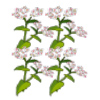 Tobacco (Nicotiana tabacum 'Orinoco')
Tobacco (Nicotiana tabacum 'Orinoco')
A very old, flue cured-type tobacco variety historically used for pipe and cigar blending.
 Cotton (Gossypium hirsutum 'Nankeen')
Cotton (Gossypium hirsutum 'Nankeen')
Pre-1860 heirloom. ‘Nankeen’ is a short-fiber, naturally brown cotton that has been grown since before the Civil War. ‘Nankeen’ cotton was originally grown in the Mansfield, Louisiana area to be made into clothing worn by enslaved people. The lint is a non-fading, attractive, dark copper color that actually becomes slightly brighter and darker each time it is washed. Branches of the plant are longer and thinner, and its leaves are more finely divided than modern cotton. Unlike modern hybrids, its blooming cycle is longer; it grows well in poor, dry soil; it is hardier than modern breeds; and it appears to have greater insect resistance. The white and pink blooms start in mid-summer and continue until late fall.
 Sesame (Sesamum indicum)
Sesame (Sesamum indicum)
Growing up to 6 feet tall with white flowers, this revived Low Country heirloom sesame is packed with flavor. Benne is the Bantu word for sesame, which was first domesticated in India, and is very important throughout Africa. West Africans brought these seeds to the West Indies and the southern US in the late 17th century and continued to grow patches for their use while enslaved. Later, benne oil became the salad dressing of choice in the 19th century southern US. As cheaper oils became available, and as sesame was bred to shatter less (and unfortunately taste less too), the flavorful, aromatic benne was all but lost. This low-oil sesame landrace strain was preserved by David Shields and the Carolina Gold Rice Foundation, and listed as an endangered, culturally important landrace by the Slow Food Ark of Taste. Glenn Roberts (Anson Mills) also mentions that sesame is included in “an African traditional companion planting with sorghum, cowpea, and a gourd, and may be used as a protective border planting.”
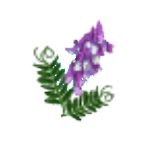 Indigo (Indigofera tinctoria)
Indigo (Indigofera tinctoria)
True indigo, a leguminous shrub with species native to Northern Africa, Asia, India, Mexico, and South America. In the US in the mid-1700s, Eliza Lucas—the 16-year-old daughter of a newly arrived British colonial officer—was put in charge of dozens of enslaved people and hundreds of acres. She is credited with launching the indigo industry in the Southeast (and, shockingly, still widely viewed as something of a symbol of female empowerment, despite the terrible cruelty of her business). With seeds brought from the Caribbean (where she was raised), and no doubt the expertise of the African people her family kept in bondage (who likely had experience with indigo production in Africa), the Lucas family became incredibly wealthy supplying vivid blue dye to buyers in Great Britain.
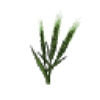 Rice (Oryza sativa 'Carolina Gold')
Rice (Oryza sativa 'Carolina Gold')
Carolina Gold Rice, a long grain rice, was the basis of the colonial and antebellum economy of Carolina and Georgia. Considered the grandfather of long grain rice in the Americas, Carolina Gold (which emanated from Africa and Indonesia) became a commercial staple grain in the coastal lands of Charles Towne in the Carolina Territory in 1685.
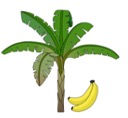 Banana (Musa 'African Rhino Horn')
Banana (Musa 'African Rhino Horn')
It is no exaggeration to say that banana production fueled many Anglophone Caribbean islands’ independence from Britain in the mid to late 20th century. As Anthony Payne writes in “The End of Green Gold? Comparative Development Options and Strategies in the Eastern Caribbean Banana-Producing Islands”:
Bananas were the basis of the political economy of Dominica, St. Lucia, and St. Vincent during the 40 or so years from their establishment as a crop in the 1950s to the beginning of their decline in the 1990s… They contributed substantially to the economic growth that, in turn, underpinned the move to political independence… in the late 1970s.
Banana production dominated the economies and economic growth of these small Eastern Caribbean islands until the beginning of the Banana Trade Wars, when protectionist European policies that propped up trade in Caribbean bananas became increasingly unpopular with the United States. The US filed a complaint with the World Trade Organization on the basis that such an agreement—dating back to the 1970s Lomé accords, to promote trade with ex-colonies—violated the principles of free trade. In 1997, the US won its case. 2006 marked the final nail in the coffin for Caribbean banana exporters, as this heralded the end of preferential access to the EU banana market.
Mahogany for 18th-century furniture was harvested under appalling conditions across the Caribbean. Slaves branded with owners’ monograms lived in thatched huts and scouted for trees. They had to drag and roll felled mahogany trunks to riverfronts and then float the logs, which were chained together, to ships waiting in bays full of sharks and coral reefs. There were only a few upsides to the task. “Enslaved woodcutters had the option of wielding their machetes against a despised authority or just slipping away into the surrounding forest,” the historian Jennifer L. Anderson writes in a new book, Mahogany: The Costs of Luxury in Early America (Harvard University Press).
 Coconut (Cocos nucifera)
Coconut (Cocos nucifera)
For centuries, the coconut palm was virtually the staff of life for the peoples of the Caribbean. From the fronds which were sued for rooks, to the logs which were used for houses and rafts, to the rough husk which made rope, the tree provided for many needs. Culinary needs were also well taken care of. Green coconuts provide water that is so pure that is was occasionally used in place of plasma in the South Pacific in World War Two. Coconut oil is the Caribbean cooking oil of choice and the grated meat of the brown ripe coconut appears on the table in all courses from appetizer to dessert. Coconut cream is frequently used in Caribbean drinks such as the pina colada.
Coffee is key to understanding the Atlantic world in the second half of the eighteenth century. Demand for this commodity led to an enormous expansion of slave-based production in the West Indies. Not only did it do so by leading to an increasing number of new coffee plantations, but also by expanding sugar production, which was partly dependent on the coffee boom. As coffee was often consumed with it, the spread of the daily consumption of coffee over continental Europe caused a further increase of demand for sugar.
 Chocolate (Theobroma cacao)
Chocolate (Theobroma cacao)
Chocolate began its cultivation in Latin American, more specifically Mesoamerica with ties to the Aztec Empire (Moss). The Spanish then encountered chocolate when they colonized Mesoamerica. They exported it to Spain, where it was eventually popularized and spread throughout Europe. In the nineteenth century, wars in central and south America disrupted the chain of cocoa production in Latin America, creating reason to experiment producing the crop in other regions of the world, which proved to be successful in West Africa. Additionally, with the independence of Latin American countries coming as a result of the wars, slavery was abolished, further shifting the production of cocoa to West Africa, where slavery was still legal (Moss). Despite developments in human rights and the implementation of laws that abolished slavery in West Africa, laborers who work in chocolate plantations still experience exploitation, such as modern slavery and child labor.
 Açaí (Euterpe oleracea)
Açaí (Euterpe oleracea)
Known for being touted as a so-called superfood, Açaí berry is predominantly cultivated in Brazil’s Amazon rainforest. With dark skin, ranging from purple to black, this tiny round berry is born in 20-meter trees and, mostly, in humid and wet soil. The fruit is cultivated by Indigenous people of the Amazon for nearly one thousand years, but some Black Brazilian communities, known as Quilombolas in the region, have also embraced the açai culture. The Quilombola Community of São José dos Portugueses is one of them. Quilombolas are traditional Black communities in rural Brazil inhabited by escaped enslaved people of African descent. Today, they struggle to be recognized and have their identity and territories respected. This week, this historical Black Brazilian community, situated in the northeast state of Maranhão, has received authorization from Brazil’s Agriculture Ministry to sell Açaí pulp in the formal market in Brazil and abroad, according to Agencia Brazil news. At least 30 Afro-Brazilian families who are directly involved in the project will be benefited. According to Brazil’s government, other 170 Black families can take advantage of that as long as the sales increase. Located in one of the poorest regions in Brazil, the quilombola can give this Black community environmental, social and economic benefits. Açai Pulp production can initially reach 115 tons per year.
Those of us who were landed in the less clement climes of the North American continent foraged in the areas near our homes and grew plants that we used to supplement meager rations. We were fortunate to arrive with African plants such as okra, field peas, and watermelon, and found new plants like sweet potatoes that we used for food in our New World exile. Others we used as medicine, such as cat mint. We improvised and adapted, attempting to re-create the world from which we’d been stolen.
 Collards (Brassica oleracea 'Alabama Blue')
Collards (Brassica oleracea 'Alabama Blue')
Alabama heirloom. Landrace with wide variation in beautiful leaf colors. Green, blue-green, and purple leaves with white, pale green, and plum-colored veins. Smaller leaves than most collards; plants can be more closely spaced. The leaves are more tender and faster to cook, and the plants hold their sweetness longer in hot weather.
 Collards (Brassica oleracea 'Green Glaze')
Collards (Brassica oleracea 'Green Glaze')
Green Glaze Collards are a beautiful, glossy, dark green, and historic variety known for its taste and some resistance to cabbage worms and cabbage loopers. Food historian Michael Twitty says this variety “is my personal favorite. They are pretty, waxy, crisp, tough against bugs and extremely delicious. They also happen to be the oldest variety we have/know of collard greens dating back to the late 18th and early 19th centuries, with the Georgia Southern or Creole collard out of the Deep South going back to the 1860s–1880s.”
 Collards (Brassica oleracea 'Nancy Malone')
Collards (Brassica oleracea 'Nancy Malone')
Alabama family heirloom from MacArthur Walter and his wife Annie’s mother, Nancy Wheat. Big plants are 1½–2 ft tall and 3–3½ ft wide. Dark green tender sweet leaves have purple veins and stems.
 Collards (Brassica oleracea Variegated)
Collards (Brassica oleracea Variegated)
Florida family heirloom since ~1910. Seed originally via SESE grower Walt Childs. Introduced 1999 by SESE. Tender greens with good cold hardiness; as the plants experience colder and colder weather, at least half the plants’ leaves become a beautiful green-and-white during the winter. In the South where the winter temperatures remain above 20°F, plants can live 5+ years and develop stems 3″ in diameter.
 Creasy Greens (Barbarea verna)
Creasy Greens (Barbarea verna)
This short-lived perennial from southern Europe and western Asia has naturalized itself around the world. Long cultivated as a vegetable, it is most well-known these days as a weed, but for many people it is a treasured heirloom. Historically, it has also been a lifeline. Stories abound of people in life-threatening situations relying on this plant, from enslaved African people to shipwrecked sailors. As a vital source of Vitamin C and other nutrients, it has prevented scurvy for untold numbers of people through the years. The taste is similar to watercress, but it is much easier to grow (needs no water beyond that which falls from the sky). The name “creasy greens” applies most to this species when it is cooked like collard greens.
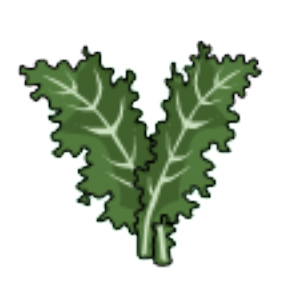 Kale (Brassica oleracea Lacinato Rainbow Mix)
Kale (Brassica oleracea Lacinato Rainbow Mix)
Lacinato’s treasured taste, plus many shades of red and purple in the stems and leaves. As with other red-tinted greens, color is most vivid in cool weather. Created by crossing classic Lacinato with Redbor hybrid kale.
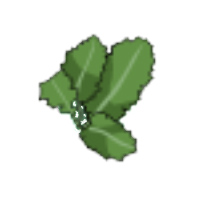 Mustard (Brassica juncea 'Southern Giant Curled')
Mustard (Brassica juncea 'Southern Giant Curled')
An old Southern favorite. Leaves are large, bright green, with attractively curled leaf edges. This variety is used for late sowings, has cold tolerance, and good bolting resistance.
 Turnip (Brassica rapa v. rapa 'Seven Top')
Turnip (Brassica rapa v. rapa 'Seven Top')
Seven Top Turnip is the standard amongst lovers of Turnip greens throughout the Southern US, including in the gardens and on the table of Truelove Seeds’ co-founder Chris Bolden Newsome’s family in the Mississippi Delta. Dating back to the 1830s in Virginia, this variety is an unusual turnip in that it does not grow an edible root, instead focusing its energies on creating lots of delicious leaves. While most turnips are grown for animal forage (roots and leaves), this leafy variety is grown in kitchen gardens exclusively for the human dinner table.
Slow Food International has designated Seven Top Turnips as a culturally important and endangered variety in their Ark of Taste. They explain: “In southern cookery it was particularly favored in wilted salads, in which hot bacon grease and salt are poured over the fresh, washed greens.” In our house, we simply sauté them with lots of onions, garlic, peppers, and seasoning, and often mix them with other greens, especially mustards.
 Dandelion (Cichorium intybus 'Catalogna')
Dandelion (Cichorium intybus 'Catalogna')
Dandelion greens were just one of many greens that were foraged by enslaved peoples, and they continue to be a foraged green earning more popularity for their various uses, both for food and medicines.
 Purslane (Portulaca oleracea)
Purslane (Portulaca oleracea)
An Omega-3-rich plant that loves the hot weather and produces thick, lemony-flavored, succulent leaves
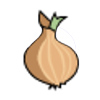 Onion (Allium cepa 'Ailsa Craig')
Onion (Allium cepa 'Ailsa Craig')
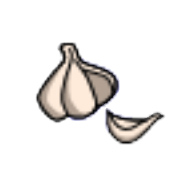 Garlic (Allium sativum var. ophioscorodon 'Music')
Garlic (Allium sativum var. ophioscorodon 'Music')
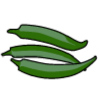 Okra (Abelmoschus esculentus 'Sea Island Red')
Okra (Abelmoschus esculentus 'Sea Island Red')
Seeds from Sarah Ross, UGA’s Center for Research & Education at Wormsloe who in turn had received seeds from Sapelo Island seed saving matriarch Cornelia Bailey (now deceased). The seeds were labeled as Ethiopian Red Okra, believed to be a traditional variety of the Gullah Geechee. Velvety, soft, red pods are slightly ridged and 6–8” long. Plants also have beautiful dark red stems and are moderately branching. Delicious flavor and very ornamental.
 Okra (Abelmoschus esculentus 'Burgundy')
Okra (Abelmoschus esculentus 'Burgundy')
 Pepper (Capsicum annuum 'Fish')
Pepper (Capsicum annuum 'Fish')
The Fish Pepper is an extremely flavorful, productive, and decorative variety that makes an excellent hot sauce. The white unripe fruit were used to flavor seafood dishes in the Black catering community of Baltimore in the late 1800s and early 1900s. The fish pepper has been designated by Slow Food as an outstandingly tasty, culturally important, and endangered heirloom from Philadelphia and Baltimore, and is listed in their Ark of Taste as a way to invite everyone to take action to help protect it.
 Scallions (Allium cepa 'Evergreen Hardy White' [aggregatum group])
Scallions (Allium cepa 'Evergreen Hardy White' [aggregatum group])
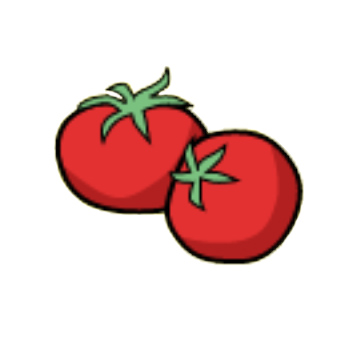 Tomato (Solanum lycopersicum 'Moyamensing')
Tomato (Solanum lycopersicum 'Moyamensing')
In 1982, William Woys Weaver received seeds for this historic medium red tomato from Mrs. M.J. Grooms, an African American woman living in Philadelphia. Mrs. Groom’s great grandfather passed down the seeds through the generations—and for good reason—it’s a tried and true heirloom! He had worked as a cook at Eastern State Penitentiary on Fairmount Avenue in the Spring Garden area of Philadelphia, where this variety had been grown by incarcerated workers in the gardens since the mid-1800s. These gardeners shared the seeds with him, and it is likely he used the tomatoes in soups, catchup, and canning in the prison.
 Watermelon (Citrullus lanatus 'Georgia Rattlesnake')
Watermelon (Citrullus lanatus 'Georgia Rattlesnake')
Watermelons originate in West Africa, where they have been cultivated for at least four thousand years. These great-tasting, snake-striped heirloom watermelons from the 19th century grow to about 35 lbs or even larger! Their solid rinds help them travel and store well.
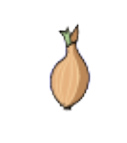 Shallot (Allium cepa 'Roderique')
Shallot (Allium cepa 'Roderique')
 Sweet potato (Ipomoea batatas 'Beauregard')
Sweet potato (Ipomoea batatas 'Beauregard')
Sweet potatoes are New World tubers that were adopted by enslaved Africans on the American continent. They could be grown in the temperate climates; they could be stored in mounds and used as needed to supplement meager rations. When cooked in the ashes of a dying fire, they were a sweet treat at the end of a bone-tiring day of toil. Most important, sweet potatoes were taken to the hearts and stomachs of Africans and their descendants in the United States because they recalled the true yam of Africa.
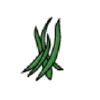 Field Pea (Vigna unguiculata 'Iron' and 'Clay Southern')
Field Pea (Vigna unguiculata 'Iron' and 'Clay Southern')
Brought to the U.S. by enslaved Africans before the American Revolution. Clay peas were carried as rations by Confederate soldiers, while both Iron and Clay peas sustained newly freed African-Americans after the Civil War according to George Washington Carver’s 1908 Cookbook of Field Pea Recipes. Vigorous, drought hardy plants are a great nitrogen-fixing cover crop. Daylength-sensitive variety. Starts flowering when nights lengthen to ~11 hours. Late maturing pods can be harvested for the kitchen or used for fodder.
 Field Pea (Vigna unguiculata 'Sea Island Red')
Field Pea (Vigna unguiculata 'Sea Island Red')
Sea Island Red Peas are a Gullah Geechee variety used in coastal Carolina Hoppin’ John and Reezy Peezy. It is an important companion to Carolina Gold Rice in the pot, and it is a great crop to add nitrogen back into the soil between rice rotations. It’s an absolutely delicious southern pea that grows prolifically on short runners.
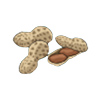 Peanut (Arachis hypogaea 'Carolina Runner')
Peanut (Arachis hypogaea 'Carolina Runner')
Brought to the US in the 1600s by enslaved West Africans, this is the original American peanut. Thought to be extinct since the 1930s, until Dr. David Shields tracked down a small sample in NC State University’s seed archives. From a 2013 planting of 20 seeds, Brian Ward of Clemson’s Coastal Research and Education Center has been building up the population. The peanuts are smaller, denser, and oilier than other peanuts, and sweeter than Virginia peanuts. Historically, they were used for making peanut oil, used in savory dishes, desserts, and beverages, and later for peanut butter. A runner peanut, vines can spread 3+ ft (great for keeping down weeds), but needs 2–3 weeks longer to mature than other peanuts.
 Corn (Zea mays 'Sea Island White Flint')
Corn (Zea mays 'Sea Island White Flint')
Corn, tobacco, and cotton were the most influential crops in the coastal culture of the southern states. For 300 years prior to European arrival, Sea Island White Flint corn was a Native American crop that thrived in the Sea Islands of the South, especially South Carolina and Georgia. As a recently revived crop, long absent from the fields of the United States, Sea Island White Flint has been slowly been increasing in seed stock and production from 2009 to the present day.
We created baskets from sweetgrass to hold things in our homes, and used other plants, such as palms, to build the houses themselves. We wove cotton fibers to make fabric, then dyed it with colors made from other plants including indigo. We grew gourds and used them for storage and kitchen utensils. They also became musical instruments like berimbaus, banjoes, shekeres, maracas, guïros, and drums. All created rhythms that praised ancestors, honored orisa and loa, and made the world dance.
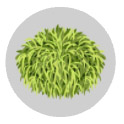 Sweetgrass (Hierochloe odorata)
Sweetgrass (Hierochloe odorata)
The art of sweetgrass basket weaving is practiced in coastal and barrier island communities from North Carolina to Florida, a region known as the Gullah-Geechee Cultural Heritage Corridor. The Gullah-Geechees are the descendants of enslaved West Africans who worked on coastal plantations and were able to hold on to many traditions brought to these shores during the Transatlantic Slave Trade. Visit Charleston or Beaufort, South Carolina, and you’ll see people sitting on rural roadsides or in city parks and on street corners selling these beautiful baskets. In Georgia, you’ll find basket weavers on Sapelo Island and on St. Simons Island, and in coastal communities like Riceboro, Darien and Harris Neck. Each basket starts with a knot, and moistened grasses or pine needles are repeatedly coiled and wrapped with strips of palm frond stems. Some have lids, while others have handles and other ornate designs. Today they are considered works of art. However, the Gullah-Geechee ancestors used baskets for more practical purposes—for storing food, toting things like crops from the fields, and for fanning rice, flipping the grains into the air so that the husk could be carried away with the wind.
 Flax (Linum ussitisimum)
Flax (Linum ussitisimum)
In West Africa, where many enslaved people came from, clothing was minimal, and even that was generally stripped from newly enslaved people. In Virginia, enslaved people were outfitted with European clothing they often found to be constricting and uncomfortable. The fabrics tended to be inferior, with enslavers using whatever was most cost-effective. Homespun Virginia cloth and imported osnaburg fabric (made from flax and hemp) were common in the eighteenth century. By the nineteenth century, with the rise of cotton production and industrialization, jean cloth became more common and allowed enslavers to provide clothing that was untailored and ready-made.
 Saw Palmetto (Serenoa repens)
Saw Palmetto (Serenoa repens)
 Cotton (Gossypium hirsutum 'Arkansas Green Lint’)
Cotton (Gossypium hirsutum 'Arkansas Green Lint’)
Soft light green cotton with short fibers and dark green seeds. The yellow-pink flowers are lovely, excellent in floral arrangements.
 Cotton (Gossypium hirsutum 'Sea Island Brown’)
Cotton (Gossypium hirsutum 'Sea Island Brown’)
Likely cross of Sea Island White and an unknown brown cotton. Introduced 2010 by Southern Exposure Seed Exchange. “Naked seeds” are easily removed from the lint, has a longer fiber than other browns. The tall (5–6 ft.) plants and some shine to the spun cotton both point to a Sea Island heritage.
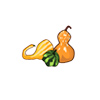 Bottle Gourd (Lagenaria siceraria)
Bottle Gourd (Lagenaria siceraria)
In South Africa, women are the main custodians of gourds, more commonly known as calabashes, growing them as a source of food and medicinal cures, and preparing them for use as containers, and for other purposes. It is generally accepted that these bottle gourd are indigenous to Africa. Once harvested, the gourds are stored for at least six months to allow them to dry out before they are cut open and prepared for domestic use. Rural communities also commonly eat the leaves and green fruit of gourds as vegetables and snack on their seeds. Oil can also be extracted from these seeds. Among Zulu-speakers, infusions made from two handfuls of a mixture of leaves or roots with those of Bidens pilosa (blackjack) are taken for stomach aches or administered as enemas. In Natal and the Zulu Kingdom, milk was soured in gourds kept at the back of the umsamo (hearth) of homesteads before being consumed from clay pots. The milk was poured into these containers through a round opening cut into the narrow neck. A small hole drilled into the bottom of the gourd, which was fitted with a wooden plug, was used to drain the thin watery whey from the clotted souring milk curds. They could also be sucked out through a reed. Among the Bhaca, anyone who was regarded as ritually impure such as a menstruating woman or boys going through puberty rights were prohibited from attending to milk calabashes even if the sour milk overflowed while fermenting. Spoons and ladles made from gourds are used for scooping water, milk or beer from one container into another. They were also used as spoons for eating and drinking. During the 19th century, people living in the Zulu kingdom close to the king’s home, thanked him after the annual harvest by presenting him with beer.
 Jicara (Crescentia cujete)
Jicara (Crescentia cujete)
The calabash tree, also known as jicara, kalbas kouran, or the higüero tree, is native to Americas. The trees produce fruits which are cut in half, dried and carved hollow to create things. The jicara fruit may be used to carry water, serve food, make instruments, and vessels for medicinal or spiritual use.
 Jute (Corchorus capsularis)
Jute (Corchorus capsularis)
Yoruba variety of shiny, green, palmate-shaped jute leaves used to make Ewedu Soup. Our friend Halima Salazar introduced us to this Nigerian specialty, and shared this preparation for these highly-nutritious, delicious, very slimy greens.
 Bamboo (Bambusa spp.)
Bamboo (Bambusa spp.)
 Royal Palm (Roystonea regia)
Royal Palm (Roystonea regia)
 Indigo (Indigofera tinctoria)
Indigo (Indigofera tinctoria)
 Hibiscus (Hibiscus rosa-sinensis ‘Shoeblack’)
Hibiscus (Hibiscus rosa-sinensis ‘Shoeblack’)
Hibiscus rosa-sinensis is also known as shoeblack because the petals can be boiled in water to produce a black dye used for shoe polishing.
 Turmeric (Curcuma longa)
Turmeric (Curcuma longa)
 Marigold (Tagetes erecta)
Marigold (Tagetes erecta)
 Ambay Pumpwood (Cecropia pachystacha)
Ambay Pumpwood (Cecropia pachystacha)
Those of us kidnapped and transported to the Caribbean region discovered a tropical climate that provided a bounty like our African homelands. While we labored in the cane fields, we learned from Native peoples and grew plants to feed ourselves in curated wild gardens called conucos. There, we cultivated plants we knew like pigeon peas, and seasoned our cooking pots with herbs like culantro. Other plants were used for medicine, while still others allowed us to express our creativity.
 Sweetsop (Annona squamosa)
Sweetsop (Annona squamosa)
 Barbados Cherry (Malpighia punicifolia)
Barbados Cherry (Malpighia punicifolia)
Also known as West Indian cherry and acerola, Barbados cherries are tropical evergreen shrubs. Acerola can be used in drinks and jams and juices like Jugo de cereza Dominicana, a refreshing treat found in the Dominican Republic.
 Mango (Mangifera indica ‘Sea Island Brown’)
Mango (Mangifera indica ‘Sea Island Brown’)
Mangoes arrived in the New World (Brazil) in the 15th century and in the Caribbean after 1872. It’s difficult to be exact about the year, but in 1872, a French vessel carrying a cargo of mangoes from the Iles Bourbon to Hispaniola was captured by the English off Jamaica, the cargo was jettisoned, then floated to various Caribbean islands where it reproduced. The most common mangoes in the Caribbean are Julie mangoes, which are flattened light green ovals. Mangoes are used in many different ways in the Caribbean. Green mangoes are used in hot sauces and in condiments such as kuchela. Ripe mangoes appear in desserts and candies and even pureed in drinks. Needless to say, to many, a ripe mango simply sucked on or cut open and eaten is one the delights of the tropics.
 Sapodilla (Manikara zapota)
Sapodilla (Manikara zapota)
A native of the Caribbean, this fruit is known as sapodilla or nispero in Spanish and sapotille in French. The Mexican name for the tree is chicozapote, and the sap from the tree is known as chicle, the substance from which chewing gum is made. Naseberries are usually eaten simply as fruit. Recently, though, they have begun to appear in tropical fruit salads and sorbets.
 Avocado (Persea americana)
Avocado (Persea americana)
 Breadfruit (Artocarpus altilis)
Breadfruit (Artocarpus altilis)
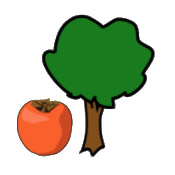 Ackee (Blighia sapida)
Ackee (Blighia sapida)
The fruit of ackee looks like a large, pink mango or guava until it has ripened, when it “smiles” and reveals yellow interior with black seeds. Until ackee has reached this ripe stage it is considered poisonous.
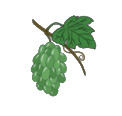 Sea grape (Coccoloba uvifera)
Sea grape (Coccoloba uvifera)
 Jaboncillo (Blighia sapida)
Jaboncillo (Blighia sapida)
 Tomato (Solanum lycopersicum 'Plate de Haiti')
Tomato (Solanum lycopersicum 'Plate de Haiti')
Prolific, vermilion red, apple-shaped tomato that has been associated with Hispaniola since the 1550s. Right up until frost, this indeterminate tomato produces endless 2-inch fruits that are flavorful when eaten fresh, and even better in sauce. According to William Woys Weaver who shared the seeds with Pentridge Children’s Garden, this variety was first documented in Conrad Gessner’s Historia Plantarum in 1561. In 1793, the Creole refugees who fled the successful uprising of enslaved people in Haiti brought this tomato with them. Dr. Weaver was able to find this tomato depicted in paintings of that time period made by the Peale family of Philadelphia, well before it became a popular food in North America (see Still Life: Balsam Apples and Vegetables, 1820 by James Peale). The kids at Pentridge Children’s Garden in West Philadelphia explore the history of the Haitian Revolution while growing and eating this tomato.
 Okra (Abelmoschus esculentus 'Sea Island Red')
Okra (Abelmoschus esculentus 'Sea Island Red')
 Pepper (Capsicum annuum 'West Indies Red')
Pepper (Capsicum annuum 'West Indies Red')
A hot, red-fruited habanero pepper that is a staple in the Caribbean.
 Pepper (Capsicum chinensis 'Aji Dulce')
Pepper (Capsicum chinensis 'Aji Dulce')
Aji dulce peppers are mild, sweet and smoky seasoning peppers popular in Puerto Rico, Venezuela, and throughout the Caribbean. An important ingredient for sofrito, but also eaten in salsas, salads, or roasted.
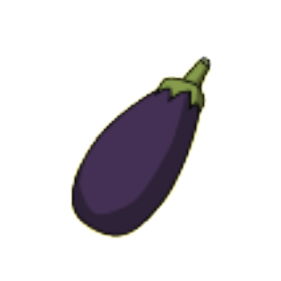 Eggplant (Solanum melongena 'Rosita')
Eggplant (Solanum melongena 'Rosita')
A pear shaped, pink/lavender fruited variety that was brought to the United States from Puerto Rico in 1979.
 Tomato (Solanum pimpinellifolium 'Wild Chilapas')
Tomato (Solanum pimpinellifolium 'Wild Chilapas')
A close relative to common garden tomatoes. Chiapas tomatoes are less domesticated and have smaller fruits and are less prone to diseases like early and late blight.
 Okra (Abelmoschus esculentus 'Puerto Rico Ever Blush'
Okra (Abelmoschus esculentus 'Puerto Rico Ever Blush'
A variety descended from a Puerto Rican called Puerto Rican Evergreen. Puerto Rico ever blush has six-inch-long pods that range from green, to green blushed with pink, to pink.
 Chayote (Sechium edule
Chayote (Sechium edule
A relative of the gourd family, also known as christophine, chocho, mirliton, xuxu, and vegetable pear. All parts (roots, stem, leaves, fruits, and seeds) are all edible and can be eaten raw or cooked. If the chayote is older, the peel and seeds should be composted.
 Rice (Oryza sativa 'Hill')
Rice (Oryza sativa 'Hill')
An upland variety from communities on the south coast of Trinidad, including Moruga. Supplied by Truelove Seeds.
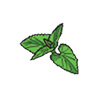 Calaloo (Amaranthus)
Calaloo (Amaranthus)
Callaloo is a name of a Caribbean soup and also refers to the greens used in the dish. The dish originates in West Africa and is cherished in the Caribbean. Callaloo may refer to leaves of plants in the amaranth genus, or taro (Colocasia).
 Amaranth (Amaranthus retroflexus 'Bledo')
Amaranth (Amaranthus retroflexus 'Bledo')
 Lima Bean (Phaseolus lunatus 'Christmas)
Lima Bean (Phaseolus lunatus 'Christmas)
A lima variety with irregular cream and red stripes.
 Habanero (Capsicum annuum
Habanero (Capsicum annuum
 Calabaza (Cuburbita moshata)
Calabaza (Cuburbita moshata)
When you have pumpkin soup in the Caribbean, odds are that the calabaza is the vegetable used. Calabaza can be pureed, baked, roasted, and fried.
 Red Kidney Bean (Phaseolus vulgaris)
Red Kidney Bean (Phaseolus vulgaris)
 Turtle Bean (Phaseolus vulgaris)
Turtle Bean (Phaseolus vulgaris)
 Pigeon Pea (Cajanus cajan)
Pigeon Pea (Cajanus cajan)
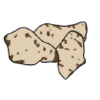 Yam (Dioscorea rotundata 'African White')
Yam (Dioscorea rotundata 'African White')
The yam, a large hairy tuber that bears no botanical relationship to the sweet potato, grows mainly in tropical and subtropical climates and is of primary importance to many West African societies. From Ghana to Nigeria, yam festivals celebrate the desire for a bounteous harvest and the continuity of life. In languages of the West African coast, including Wolof in Senegal and Umbundu in Angola, the tuber is so popular that some variant of the word “yam” simply means “to eat. “Slavers transporting captives from those areas on the Middle Passage provisioned themselves with yams sufficient for the voyages. But once ashore in more temperate America, the slaves found that the African tuber was unavailable, and thus substituted it with the sweet potato, leading to centuries of botanical and gastronomic confusion. (More recently, though, true yams imported from the tropics have become available in ethnic markets in this country.) Today Thanksgiving thrives as a beloved national feast celebrated by Americans of all ethnic origins and religions. It has expanded with the country beyond the traditional foods like turkey and corn and pumpkins that remind us of the Pilgrims’ feast and the generosity of the American Indians. On many African-American tables, next to the dressed bird, there will be a sweet potato dish, be it a casserole, a pone, a pie or the classic candied sweet potatoes topped with marshmallows.
 Yam (Dioscorea trifida 'Yampi')
Yam (Dioscorea trifida 'Yampi')
Known as the yam, Ñame, yautia, and tannia in the Caribbean. For many African nations, yams were a symbol of life’s continuation, because new yams grow from older roots. This religious significance continued on to the New World, where new yams are consecrated in voodoo temples in Haiti during a ceremony known as mange yam (yam eating). Yams are served in a variety of ways in the Caribbean, ranging from boiled and pureed like mashed potatoes to French-fried or cut up and added to soups and stews.
 Arrowroot (Maranta arundinacea)
Arrowroot (Maranta arundinacea)
This rhizome is dried and powdered into one of the most easily digested of all starches. In the Caribbean it is used in preference to cornstarch to thicken sauces. Saint Vincent is the source of the majority of the world’s arrowroot supply.
 Taro (Colocasia esculenta)
Taro (Colocasia esculenta)
Taro is native to Southeast Asia and Southern India and has a sweet, nutty flavor.
 Malanga / Yautia (Xanthosoma sagittifolium)
Malanga / Yautia (Xanthosoma sagittifolium)
Part of the Xanthosoma genus which may go by the names Malanga or Yautia in the Caribbean. Malanga blanca is a white variety of Xanthosoma sagittifolium and Yautia lila is a purple variety. Malanga is native to the lowland areas of South America and has a nutty, earthy flavor.
 Sweet Potato (Ipomoea batatas 'Boniato')
Sweet Potato (Ipomoea batatas 'Boniato')
Boniato may also be known as batatas, comaote, or tropical sweet potato. They are native to Central American and have been cultivated as early as 1000 BC in Columbia and Peru for their edible pink to burgundy skinned tubers with white flesh. Boniato is considered less sweet and drier than common sweet potatoes.
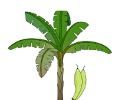 Plantain (Musa 'Dwarf Puerto Rican')
Plantain (Musa 'Dwarf Puerto Rican')
A fast-producing, six-foot dwarf plantain tree widely grown in Puerto Rico.
 Cassava / Manihot / Yuca (Manihot esculenta)
Cassava / Manihot / Yuca (Manihot esculenta)
Cassava is a tropical root crop also known as manioc and yuca. It may be made into tapioca, or into flour and used in various breads like pain de kassav or pan de casaba, and bammie, the Haitian, Dominican, and Jamaican versions of the same cassava bread that was served to Columbus. Boiled down and grated, the juice of cassava is known as cassareep, and is often flavored with brown sugar, cinnamon, and cloves, and is one of the oldest condiments in the Caribbean.
 Wild Yam (Dioscorea villosa)
Wild Yam (Dioscorea villosa)
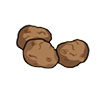 Potato (Solanum tuberosum)
Potato (Solanum tuberosum)
 Bay Laurel (Laurus nobilis)
Bay Laurel (Laurus nobilis)
 Cardamom (Elettaria cardamomum)
Cardamom (Elettaria cardamomum)
 Cilantro (Coriandrum sativum)
Cilantro (Coriandrum sativum)
Cilantro was brought to the Americas by the Spaniards and is emblematic of the foods of the Spanish-speaking Caribbean. Seed pods and seeds of the plant are used to make several West Indian curries
 Culantro (Eryngium foetidum)
Culantro (Eryngium foetidum)
A strong aromatic herb native to Mexico and the Caribbean. Also known as recao in Puerto Rico and the Dominican Republic and considered an essential part of sofrito recipes. In Trindad, it is called chado beni.
 Black Pepper (Piper nigrum)
Black Pepper (Piper nigrum)
 Vanilla (Vanilla planifolia)
Vanilla (Vanilla planifolia)
 Cinnamon (Cinnamomumverum [syn. Zeylanicum])
Cinnamon (Cinnamomumverum [syn. Zeylanicum])
Cinnamon sticks, also called quills, grow on cinnamon trees in the Caribbean. In markets in Barbados, cinnamon is often labeled “spice,” speaking to its frequency of use in Caribbean cooking.
 Mace / Nutmeg (Myristica fragrans)
Mace / Nutmeg (Myristica fragrans)
Two of the spices that Columbus was looking for when he stumbled upon the Caribbean, nutmeg and mace, are from the same tree. The nutmeg is the seed and the mace is the lacy aril that covers it. Grenada, the Caribbean’s spice island, is one of the world’s largest producers of nutmeg today, and the tall, tropical evergreen from which the nuts come scents the air with its fragrance. Nutmeg has been a popular spice in Caribbean cooking for centuries: a grating is indispensable to a true rum punch and the grated spice subtly enhances curries, stews, soups, and desserts.
 Curry (Murraya koenigii)
Curry (Murraya koenigii)
 Allspice (Pimenta dioica)
Allspice (Pimenta dioica)
Also known as pimento, bois d’Inde, and Jamaica pepper, allspice’s edible seeds have the taste of nutmeg, cinnamon, black pepper, and cloves, and are used to season seafood dishes called blaffs, and creole blood sausage. Leaves may also be found in spice baskets in Grenada, and true Jamaican foods are grilled over a fire of allspice branches.
 Tamarind (Tamarindus indica)
Tamarind (Tamarindus indica)
 Papaya (Carica papaya)
Papaya (Carica papaya)
Known as fruta bomba in Cuba, lechosa in the Dominican Republic and Puerto Rico, papaya in the French-speaking Caribbean, and erroneously as pawpaw or melon tree in many English-speaking islands, the papaya is a native of the Caribbean. Papaya usually appears on Caribbean tables at breakfast or at dessert, sliced and accompanied by a wedge of lime; they are also eaten green in salads and condiments.
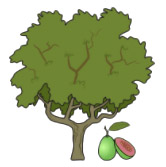 Guava (Psidium guajava)
Guava (Psidium guajava)
Guava is a tropical fruiting tree with edible berries that may be white, yellow, pink, or red and range from sweet to acidic. Guava are indigenous to the American tropics and naturalized in Hawaii, Puerto Rico, and Florida.
 Annatto / Achiote (Bixa orellana)
Annatto / Achiote (Bixa orellana)
Also called achiote, urucu, and roucou. The berries are mixed with lard or other oils to provide an orangish yellow coloring. These were also used by Indigenous Caribbean peoples for decoration.
We have always known the properties of plants to cure, harm, heal, and comfort. This knowledge arrived with us and informed about plants like roselle. We expanded our medicines with new knowledge both learned from Native Peoples, and discovered from experimentation. At times healing plants, including spearmint, were grown in raised beds called azoteas. This living pharmacopeia offered new cures and new remedies. Our knowledge kept us connected to African traditions and allowed us to heal, help, and yes, harm, in in the new hemisphere.
 Licorice (Glycyrrhiza glabra)
Licorice (Glycyrrhiza glabra)
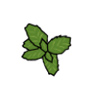 Cat Mint (Nepeta cataria)
Cat Mint (Nepeta cataria)
 Aloe (Aloe vera)
Aloe (Aloe vera)
 Lemon Verbena (Aloysia citrodora)
Lemon Verbena (Aloysia citrodora)
 Lemongrass (Cymbopogon)
Lemongrass (Cymbopogon)
 Roselle Hibiscus / Sorrel (Hibiscus sabariffa)
Roselle Hibiscus / Sorrel (Hibiscus sabariffa)
The deep red flower of the hibiscus family is sometimes known as sorrel or roselle (rosella) and in Spanish as flor de Jamaica. The podlike flowers of the plant are dried and then steeped in water to make a brilliant red drink that has the slightly tart taste and the color of cranberry juice. The drink is consumed as a nonalcoholic beverage by children, but becomes another thing altogether with the addition of rum. It is a traditional Christmas drink.
 Rosemary (Rosmarinus offinalis)
Rosemary (Rosmarinus offinalis)
 Rue (Ruta graveolens)
Rue (Ruta graveolens)
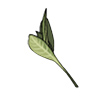 Sage (Salvia officinalis)
Sage (Salvia officinalis)
 Ginger (Zingiber officinale)
Ginger (Zingiber officinale)
Ginger is native to Asia but has done so well in the Caribbean “that Jamaican ginger has become synonymous with the quality spice for many of us. Ginger is used fresh, dried, or powdered in many of the region’s recipes, where it turns up in everything from ginger beer to candied ginger and ginger tea. One Jamaican lemonade recipe even calls for a few gratings of peeled fresh ginger to give it some zing.” (Harris, 59).
 Sweet Flag (Acrous americanus)
Sweet Flag (Acrous americanus)
 Stinging Nettle (Urtica dioica)
Stinging Nettle (Urtica dioica)
 Okra (Abelmoshus esculenta 'Hill County Red')
Okra (Abelmoshus esculenta 'Hill County Red')
 Collards (Brassica oleracea)
Collards (Brassica oleracea)
 Cerasee (Momordica chantaria)
Cerasee (Momordica chantaria)
Native to Africa, and also popular in Southeast Asian and Asian cuisine. Bitter melon may also be known as cerasee, balsam apple, and cundeamor. The young fruit and leaves can be cooked as a vegetable and has numerous medicinal qualities.
 Tropical Milkweed (Aslcepias curassivica)
Tropical Milkweed (Aslcepias curassivica)
Asclepias curassavica is a tropical milkweed also called ipecacuanha, and blood flower. In the West Indies, it is used as an emetic to induce vomiting.
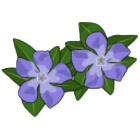 Vinca / Periwinkle (Catharanthus roseus)
Vinca / Periwinkle (Catharanthus roseus)
 Turmeric (Curcuma longa)
Turmeric (Curcuma longa)
 Kalanchoe (Kalanchoe pinnata)
Kalanchoe (Kalanchoe pinnata)
 Yerba Buena / Spearmint (Mentha spicata)
Yerba Buena / Spearmint (Mentha spicata)
 Basil (Ocimum basilicum var. minimum 'Spicy Globe')
Basil (Ocimum basilicum var. minimum 'Spicy Globe')
 Cuban Oregano (Pleth amboinicus)
Cuban Oregano (Pleth amboinicus)
 Purple Plantain (Plantago major)
Purple Plantain (Plantago major)
 Culantro (Eryngium foetidum)
Culantro (Eryngium foetidum)
 Menta o Poleo (Clinopodium brownei)
Menta o Poleo (Clinopodium brownei)
 Scent Leaf (Ocimum basilicum)
Scent Leaf (Ocimum basilicum)
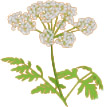 Alta Misa (Ambrosia)
Alta Misa (Ambrosia)
 Senna (Cassia hebecarpa)
Senna (Cassia hebecarpa)
A temperate Senna native to Eastern North America. Senna species can be found throughout tropical parts of the world, and are used for their cathartic and laxative properties.
We have worked and lived in this botanical crucible of the American hemisphere for more than 500 years. Here, our ancestral agricultural knowledge again met up with that of Indigenous peoples. We grew their plants: cassava and sweet potatoes alongside our own like the oil palm and okra, using both to create dishes called moquecas and cocidos that have defined the zone for the world. We have taken the plant world and transformed our ways of living, using plants and plant products to make the entire world sing and dance to our rhythms.
 Pineapple (Ananas sativus)
Pineapple (Ananas sativus)
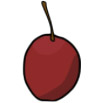 Jaboticaba (Plinia cauliflora)
Jaboticaba (Plinia cauliflora)
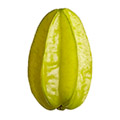 Carambola / Starfruit (Averrhoa carambola)
Carambola / Starfruit (Averrhoa carambola)
 Badea (Passiflora quadrangularis)
Badea (Passiflora quadrangularis)
 Pea Eggplant (Solanum torvum)
Pea Eggplant (Solanum torvum)
 Wild Lulo / Chocoano / Cocona (Solanum sessiflorum)
Wild Lulo / Chocoano / Cocona (Solanum sessiflorum)
 Naranjilla / Lulo (Solanum quitoense)
Naranjilla / Lulo (Solanum quitoense)
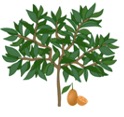 Jackfruit (Artocarpus heterophyllus)
Jackfruit (Artocarpus heterophyllus)
Introduced to Jamaica at the end of the eighteenth century by Admiral Rodney, it made its way to Hispaniola and from there to the rest of the Caribbean. Less aromatic than its Asian relative the durian, the jackfruit is never eaten raw. The fruit can grow up to 70 pounds in weight and 30- or 40-pound jackfruits are not uncommon.
 Arrowroot (Maranta arundinacea)
Arrowroot (Maranta arundinacea)
 Taro (Colocasia esculenta)
Taro (Colocasia esculenta)
 Malanga / Yautia (Xanthosoma sagittifolium)
Malanga / Yautia (Xanthosoma sagittifolium)
 Sweet Potato (Ipomoea batatas 'Boniato')
Sweet Potato (Ipomoea batatas 'Boniato')
 Cassava / Manihot / Yuca (Manihot esculenta)
Cassava / Manihot / Yuca (Manihot esculenta)
 Yam (Dioscorea cayenensis 'Yellow Guinea')
Yam (Dioscorea cayenensis 'Yellow Guinea')
 Potato (Solanum tuberosum)
Potato (Solanum tuberosum)
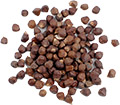 Grains of Paradise (Aframomum melgueta)
Grains of Paradise (Aframomum melgueta)
 Melagueta Pepper (Capsicum frutescens)
Melagueta Pepper (Capsicum frutescens)
 Broad Beans / Fava Beans (Vicia faba)
Broad Beans / Fava Beans (Vicia faba)
 Bledo / Bleo (Amaranthus)
Bledo / Bleo (Amaranthus)
 Aji Dulce Pepper (Capsicum annum)
Aji Dulce Pepper (Capsicum annum)
 Peach Palm (Bactris gasipaes)
Peach Palm (Bactris gasipaes)
Things did not always remain as they had been. We have a remarkable history of adaptation and discovery. Some plants were constants—like rice; others may have changed. But our connections to the African continent of our origin and to each other, although modified by time and distance, have remained strong. Here in the Bronx, we maintain many of our traditions in community gardens throughout the borough. In them, we reconnect, knowing that it was the same boat that made different stops and at each one of the stops we persevered, survived, and triumphed.
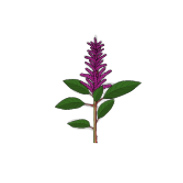 Sorghum (Sorghum bicolor 'Coral')
Sorghum (Sorghum bicolor 'Coral')
‘Coral’ is one amazing plant. From the Shilluk people of the war-torn city of Malakal, South Sudan, this is a beautiful sorghum with many uses. The large purple grains (which fade toward brown with age) can be popped like popcorn, boiled or steamed like rice or barley, ground into flour, brewed into beer, or cracked and cooked like polenta. Harvested when the grains are still green, they can be hand-threshed and cooked almost like a green vegetable (akin to sweet corn), producing a chewy, sweet, savory delight. This preparation is considered a delicacy in South Sudan. This variety also has sweet canes which can be pressed for juice to make sorghum syrup. ‘Coral’ is drought resistant and grows even in marginal soil.
 Sesame / Benne (Sesamum indicum L.)
Sesame / Benne (Sesamum indicum L.)
Growing up to 6 feet tall with white flowers, this revived Low Country heirloom sesame is packed with flavor. Benne is the Bantu word for sesame, which was first domesticated in India, and is very important throughout Africa. West Africans brought these seeds to the West Indies and the southern US in the late 17th century and continued to grow patches for their use while enslaved. Later, benne oil became the salad dressing of choice in 19th-century southern US. As cheaper oils became available, and as sesame was bred to shatter less (and unfortunately taste less too), the flavorful, aromatic benne was all but lost. This low-oil sesame landrace strain was preserved by David Shields and the Carolina Gold Rice Foundation, and listed as an endangered, culturally important landrace by the Slow Food Ark of Taste. Glenn Roberts (Anson Mills) also mentions that Sesame is traditionally included in African companion plantings with sorghum, cowpea, and a gourd, and may be used as a protective border planting.
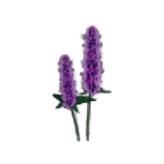 Millet (Eleusine coracana 'Dragon's Claw')
Millet (Eleusine coracana 'Dragon's Claw')
A highly productive, drought-tolerant variety that is very ornamental, especially as a border. Annual plants, 3 ft. high, produce seed heads that resembles the claws of a dragon’s foot. A staple food in India and Africa, with good flavor, though the seeds are difficult to separate from chaff.
 Pearl Millet (Pennisetum glaucum)
Pearl Millet (Pennisetum glaucum)
Pearl Millet is particularly known in Kenya for its use in preparing kinaa, a paste made with milk, and a favorite and easy-to-pack food for nomads, herders, and travelers. To make the product, dry bulrush millet is roasted and ground into a smooth flour, which is then mixed with milk and eaten as needed. It is filling and nutritious, and easy to pack the flour and milk separately for preparation on the road. It is rich in fiber and vitamin B1. The paste is also often used in weaning young children. Today, people make a similar paste using roasted maize, which lacks the nutritional qualities of millet kinaa. The bulrush millet used for making kinaa is well adapted for arid and semi-arid areas, and it used to be widely grown in the area of Ukambani, where in the past, children would chase away the birds that feed on it. Now, with children in school during the days, very little of this millet variety is still planted, as it is a favorite of birds and large amounts of the crop are lost to the animals. One women’s group that cares for orphan and vulnerable children maintains a plot of the bulrush millet variety in the area of Syiembeni. A few farmers have turned to planting the crop near roads, in hopes that noise from traffic will scare away the birds that attack the crop. Among those who still grow the crop, the average annual yield is about 10 kg. The labor-intensive production due to lack of protection from predators means that this crop is now considered endangered in the area, and those who wish to continue making traditional kinaa must do so with imported, high priced bulrush millet. More information in Lost Crops of Africa: Grains text.
 Rice (Oryza glaberrima × sativa 'Nerica 3')
Rice (Oryza glaberrima × sativa 'Nerica 3')
African improved modern Oryza sativa variety that has O. glaberrima in its lineage, from Cote D’Ivoire. Part of a USDA rice rematriation project.
 Rice (Oryza glaberrima × sativa 'Nerica 4')
Rice (Oryza glaberrima × sativa 'Nerica 4')
African improved modern Oryza sativa variety that has O. glaberrima in its lineage, from Cote D’Ivoire. Part of a USDA rice rematriation project.
 Field Pea (Vigna unguiculata 'Fast Lady Northern')
Field Pea (Vigna unguiculata 'Fast Lady Northern')
Carol Deppe selected this small, white lady pea in Oregon to mature fast in the Northwest’s cool summers, but it handles Southern summers as well! Great for short-season areas. 7–8-in.-long yellow pods are easy to pick and shell. Bushy, semi-erect plants. Tender, tasty seeds cook fast without any soaking.
 Bambara Groundnut (Vigna subterranea)
Bambara Groundnut (Vigna subterranea)
Barbaras are grown by hundreds of thousands of subsistence farmers in semi-arid Africa (where they were first domesticated) as well as in Indonesia, Thailand, and Malaysia. They are the third most important legume on the continent, after their cousin the cowpea (black eyed pea) and the peanut, with whom their history is entwined. Peanuts, originally from Paraguay and Brazil, traveled to Africa via Spain during the transatlantic slave trade, and were readily adopted because they grow and are prepared in the same way. Both plants grow their edible seeds underground from pegs that dive down from fertilized yellow flowers. You can boil or roast the fresh seeds (like peanuts) or dry them to make flour, dumplings, cakes, or porridge. According to the BamNetwork (where much of this info came from), many people prefer Bambara milk to soy or cowpea. Bambara is very nutritious, very drought tolerant, and it gives back by fixing atmospheric nitrogen in the soil. My Speckled Bambara seeds came from Roughwood Seed Collection, and theirs came from a market in Francistown, Botswana in 2001.
 Eggplant Leaf (Solanum macrocarpon)
Eggplant Leaf (Solanum macrocarpon)
Gboma greens are the bitter and nutritious leaves of a West African cousin of the eggplant. They are eaten in West, Central, and East Africa, as well as Southeast Asia. This plant grows much like a short eggplant: 2–4′ tall and bushy, with round green fruits that turn yellow when the seeds are ripe for saving. Harvest leaves as soon as they are large enough to cook with! You can also eat the stems and flowers, as well as occasional fruits. We found one delicious sounding sauce recipe in an article called “La Feuille De Gboma, Injustement Appelée « Épinard »” or “The Gboma Leaf, Unjustly Called « Spinach ».” Another sauce recipe we found (also in French) features mutton, tomatoes, and egusi. See YouTube video “Sauce Gboman (sauce épinards).” Rose Nzapa-Ayeke from New Roots Community Farm in the Bronx, New York is from the Central African Republic, and she calls this vegetable simply “Feuille d’Aubergine,” or Eggplant Leaf.
 Eggplant (Solanum melongena 'White Garden Egg')
Eggplant (Solanum melongena 'White Garden Egg')
This African variety has a delicious and slightly bitter flavor. There are many varieties of Garden Egg, but this white variety is most popular among West African and Southeast Asian families. The fruit are versatile and can be eaten raw, boiled, sautéed, or in soups. They are slightly later to produce and taller than other eggplant but very productive once they get going. Many traditional African recipes can be found online but they also are excellent simply grilled or sautéed with other veggies. The rich flavor lends itself well to spicy dishes. Young leaves are cooked down into stews. The seeds for this variety originate from Yao, an immigrant from Togo and Ethnic Crop Specialist in Maryland. The seeds were sourced from relatives in Africa and have been grown out from years on a research farm. This variety, also known as Scarlet Eggplant or Gilo, is very sought after in the West African communities, especially those from Ghana, Senegal-Gambia, Guinea, and Sierra Leone. In Ghana, they are one of the three most important vegetables along with tomatoes and peppers. They are valued for their rich and slightly bitter flavor, thin skin, and taste in numerous African stews. These are also popular with Burmese and Nepali refugee families. The white, unripe fruit can be eaten raw, boiled whole, and eaten with chili paste or most commonly cooked in stews. The leaves are also eaten and are rich in iron, vitamin c, calcium, and riboflavin. In one recipe, they are sautéed with onion, garlic, anise, mushrooms, hot pepper, parsley, and nutmeg. Then, served as a side dish over rice, couscous, boiled yucca, or yams.
 Lagos Spinach (Celosia argentea)
Lagos Spinach (Celosia argentea)
Efo Shoko (sometimes called Lagos Spinach or Nigerian Spinach) is a type of Celosia eaten in soups, stews, and side dishes in parts of Nigeria, Benin, Congo, and Cameroon, as well as in Indonesia and India. Shoko leaves can be all green or more colorful, like this particular strain, and are harvested along with the young stems and flower spikes. A member of the Amaranth family, it is believed to be native to Africa and is easy to grow in climates with suitable soil moisture, attracting few pests or diseases and thriving in heat, unlike many other common greens.
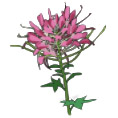 Cleome Leaf (Cleome)
Cleome Leaf (Cleome)
Related to ornamental Cleome, chinsaga is shorter (around 3 ft. high), bushier, and grown for its edible leaves. It is a bitter green, sometimes compared to mustard, and is full of nutrients and vitamins, and high in protein. A few of its many common names are shona cabbage, African cabbage, spiderwhisp, cat’s whiskers, and wild spider flower. Originating in Africa, it is a rapidly spreading plant that has become established throughout Asian and American tropics. It is used as an anti-inflammatory herb, and is often eaten by pregnant and breast-feeding women. In much of Sub-Saharan Africa, its leaves and shoots are eaten boiled or in stews, and in Uganda and Tanzania it is often prepared with groundnut paste. In Thailand and Northern Malaysia, chinsaga is fermented in rice water and served as a pickled condiment known as phak sian dong and jeruk maman, respectively.
 Waterleaf (Talinum fruticosum)
Waterleaf (Talinum fruticosum)
Waterleaf is known as Efo Gbure in Yoruba and is a very important leafy vegetable in Nigeria. They have beautiful pink star-shaped flowers and brittle seed pods that burst open, sending their seeds far and wide. For many people who themselves have dispersed far into the African Diaspora, this plant offers healing, nutrition, and a connection to home. Also known as: ̩efó̩ gbúre, Bokoboko Spinach, Mgbolodi, Ebe–dondon, Alenruwa, Philippine spinach, sweetheart, flame flower, Florida spinach, Ceylon spinach, cariru, Surinam purslane, potherb fameflower, Lagos bologi.
 Jute (Corchorus capsularis)
Jute (Corchorus capsularis)
 Okra (Abelmoschus esculentus 'Sea Island Red')
Okra (Abelmoschus esculentus 'Sea Island Red')
 Cerasee / Caraili (Momordica charantia 'Jade Dragon')
Cerasee / Caraili (Momordica charantia 'Jade Dragon')
 Cassava / Manihot / Yuca (Manihot esculenta)
Cassava / Manihot / Yuca (Manihot esculenta)
 Calabaza (Cuburbita moshata)
Calabaza (Cuburbita moshata)
 Aji Dulce Pepper (Capsicum chinensis)
Aji Dulce Pepper (Capsicum chinensis)
 Culantro (Eryngium foetidum)
Culantro (Eryngium foetidum)
 Basil / Scent Leaf (Ocimum basilicum)
Basil / Scent Leaf (Ocimum basilicum)
 Roselle Hibiscus / Sorrel (Hibiscus sabariffa)
Roselle Hibiscus / Sorrel (Hibiscus sabariffa)
 Indigo (Indigofera tinctoria)
Indigo (Indigofera tinctoria)
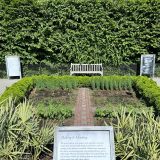
The African American Garden’s poetry walk was curated by Dante Micheaux, poet and program director of Cave Canem, an arts organization created to cultivate the artistic and professional growth of African American poets.
Curated by Jessica B. Harris, in collaboration with a team of cultural and horticultural specialists, this garden represents a living archive of more than 160 plant varieties that document the impact of the African diaspora on the food and farming histories of the Americas, as well as their ongoing stories, as plants and people travel to new places, including the Bronx. Most plants here were grown from seed by Edible Academy staff in the greenhouse across the way.
Dr. Harris is widely considered the world’s preeminent expert on the foods and foodways of the African Diaspora. She is the author of 12 critically acclaimed books and was recently inducted into the James Beard Foundation’s Hall of Fame. Dr. Harris was named one of TIME magazine’s “100 Most Influential People” of 2021. High on the Hog: How African American Cuisine Transformed America, the popular Netflix series inspired by her book, received an NAACP Image.
The Poetry Walk—a selection of works by poets from across the diaspora—was curated by Cave Canem Foundation.
Cave Canem is a nonprofit organization committed to cultivating the artistic and professional growth of Black poets. Founded by artists for artists, Cave Canem fosters community across the diaspora to enrich the field by facilitating a nurturing space in which to learn, experiment, create, and present. Cave Canem develops audiences for Black voices that have worked and are working in the craft of poetry.
2024 Consultants & Seeds Stewards:
Anna McClung
and Trevis Huggins, Ph.D.
USDA Agricultural Research Service
Dante Micheaux, Cave Canem
Glenn Roberts, Anson Mills
Henry Obispo, Founder of ReBORN FARMS
Kenneth Walker, NYBG
Maricel E. Presilla, Ph.D., Founder of Gran Cacao Americas
Scott Barton, Ph.D., University of Notre Dame
Isha Sumner-Gutiérrez, Founder of WEIGA/Let’s Eat!
DK Kinard, Urban Ag. Educator, Farmer & Chef
Sound installation by Justin Goodman from Red Gate Sound
Music recorded by Kenneth Walker
Drink stand and entrance structure painted by Bronx-based artist Andre Trenier
Bottle Tree:
Judith S. Kaye High School,
Principal: Andrew Brown
School of Cooperative Technical Education, Principal: Corey Prober
Welding Teachers:
Mr. Barry and Mr. Gauntlett
Students:
Raymond Bishop
Victor Borys
Isaiah Cruz
Abdoulaye Diallo
Mason Malave
Matthew Napolitano
Christopher Reyes
Christopher Volberg
The African American Garden is made possible by the support of the Mellon Foundation.